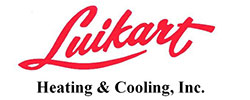
You shouldn’t be forced to sacrifice comfort or drain your wallet to keep your home at a pleasant setting during muggy weather.
But what is the right temperature, exactly? We review suggestions from energy experts so you can choose the best temp for your family.
Here’s what we suggest for the most energy-efficient setting for air conditioning in Newark.
Recommended Thermostat Settings for Summer
Most people find setting the thermostat at 72-73 degrees provides ideal comfort. However, if there’s a major difference between your interior and outside temps, your cooling costs will be greater.
These are our suggestions based on the U.S. Department of Energy (DOE) and ENERGY STAR®.
While at home: 78 degrees. While that sounds warm, there are ways you can keep your residence pleasant without having the air conditioning running frequently.
Keeping windows and curtains closed during the day keeps cold air where it should be—within your home. Some window coverings, such as honeycomb shades or plantation shutters, are designed to provide more insulation and better energy savings.
If you have ceiling fans in your home, the DOE says you can raise thermostat temperatures about 4 degrees warmer without giving up comfort. That’s due to the fact they freshen with a windchill effect. As they cool people, not rooms, shut them off when you exit a room.
If 78 degrees still appears too warm on the surface, try running a test for a week or so. Start by increasing your thermostat to 78 degrees while you’re at your house. Then, steadily lower it while using the suggestions above. You could be astonished at how comfortable you feel at a warmer temperature setting.
While away: 88 degrees. There’s no need to keep the air conditioner working all day while your house is empty. Switching the temperature 7–10 degrees warmer can save you an estimated 5–15% on your AC expenses, according to the DOE.
When you arrive home, don’t be tempted to set your thermostat below 78 to cool your residence faster. This isn’t effective and usually produces a more expensive electricity expense.
A programmable thermostat is a good way to keep your temp controlled, but you need to set programs. If you don’t set programs, you run the risk of forgetting to move the set temperature when you go.
If you’re looking for a handy solution, think over getting a smart thermostat. This thermostat works with with your phone, so it knows when you’re at your house and when you’re away. Then it automatically changes temperature settings for maximum savings. How much exactly? Usually $180 each year on heating and cooling, according to ENERGY STAR.
Another perk of installing a smart thermostat? You can use your phone to keep an eye on and regulate temperature settings from just about anywhere.
While sleeping: Around 70 degrees. While ENERGY STAR advises 82 degrees, that could be too uncomfortable for most families. Many people sleep better when their sleeping space is cold, so that’s why the National Sleep Foundation recommends 60–67 degrees. But that may be too cool, depending on your PJ and blanket preference.
We advise following a similar test over a week, moving your temp higher and slowly decreasing it to pick the right temperature for your house. On mild nights, you might find keeping windows open at night and relying on a ceiling fan is a better option than operating the air conditioner.
More Approaches to Conserve Energy During Hot Weather
There are extra methods you can conserve money on AC bills throughout warm weather.
- Get an energy-efficient air conditioning system. Central air conditioners only work for about 12–15 years and get less efficient as they become older. An updated air conditioner can keep your residence comfier while keeping electrical costs small.
- Set annual air conditioner maintenance. Annual air conditioner maintenance keeps your system running properly and might help it run more efficiently. It could also help extend its life cycle, since it helps technicians to pinpoint seemingly insignificant issues before they cause a major meltdown.
- Replace air filters often. Follow manufacturer instructions for changing your air filter. A clogged filter can cause your system to short cycle, or switch on and off too often, and drive up your cooling.
- Inspect attic insulation levels. Nearly 90% of residences in the USA don’t have proper insulation, according to the Insulation Institute. Most southern climates require 13–14” of attic insulation, while northern climates should have 16–18”.
- Have your ductwork examined. Ductwork that has loosened over time can let cool air into your attic, walls or crawl space. This can create big comfort issues in your home, including hot and cold spots.
- Seal holes, doors and windows. Keep warm air where it should be by closing cracks. You can also caulk or weather strip doors to trap more cool air inside.
Conserve More Energy During Warm Weather with Luikart Heating & Cooling
If you want to save more energy this summer, our Luikart Heating & Cooling specialists can help. Give us a call at 740-344-5497 or contact us online for more info about our energy-saving cooling solutions.
